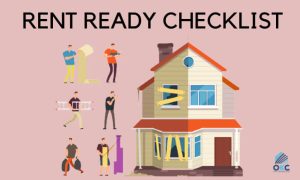The importance of finding a lucrative investment property cannot be ignored. This remains so whether you are just getting started in the rental business or you have purchased numerous rental homes. Yet, it is equally imperative that you acquaint yourself with the tools and tips that can help you find them.
If you have no idea how to get started, keep reading this comprehensive guide. In this article, you will learn how to search for investment properties. Certain steps will be provided to find the right property.
Steps to Search for Investment Properties
Beginners who have no investment goals or strategies might find it challenging to search for an investment property. To make profits, you must be able to find the right investment property. The necessary steps to achieve this are discussed as follows:
Devise a Strategy
Devising a strategy should be the first step to take in order to find an investment property. Many aspects must be put into consideration. These include the kind of rental you wish to invest in, as well as the kind of route to embrace. Consistent, monthly income can be enjoyed when a long-term strategy is devised. This can also provide long periods of tenants.
This ensures that there is need to worry about filling vacancies in a short-term rental. In contrast, short-term rentals are associated with higher profits. Yet, they can be significantly risky. For example, there is a higher chance of property damage happening, especially when people come in and out of your rental home regularly. Besides this, it is more challenging to forecast the amount of profit you can enjoy. After all, renters cannot be guaranteed monthly.
Select a Location
After deciding the type of rental home you want, then select a location. A great place to start is to have a specific city, state, or neighborhood in mind. As a result, never forget your investment goals as you choose the right location for your rental property.
In general, traditional rental investments offer better options, especially in thriving economies. In contrast, vacation rentals are great in towns where tourism is a big deal. There is no need to look too deeply to discover the right location for your investment.
Find Desirable Neighborhoods
The next step is to find a good neighborhood to invest in. As you look at multiple neighborhoods, ensure that you consider certain factors, including crime rate, economy, amenities, and more.
There are many tools that can help you find properties and neighborhoods that will suit your investment goals. For example, finding rental properties on the internet requires you to carry out extensive research. You can also consider different sites to find possibilities for investment properties.
Regardless of the kind of investment you are interested in – long-term or short-term rental home – there is a need to find a property that is located in a safe neighborhood with public amenities. In addition, the accessibility to transportation, as well as nearness to local attractions are factors that must be considered.
Perform a Property Analysis
The next step is to carry out a property analysis. This is very important when you find a property you are interested in. This will help you determine the possibility of your investment meeting the desired profit goals. This analysis must calculate your expenses, gross income, net operating income, capitalization rate, cash flow, and return on investment.
Below are formulas for estimating some of these important terms:
Net Operating Income = Income – Operating Expenses
Cash Flow = Income – Expenses
Return On Investment = Cash Flow / Investment Cost
Capitalization Rate = Net Operating Income / Property Price
Now, if you wish to estimate the gross income of your investment, it is important to sum up all income sources. These could include utilities, tenant rent payments, and fees. In contrast, if you wish to estimate your expenses, you must sum up all you spend on the property.
Utilities, taxes, insurance, mortgage interest, and property management fees are some of the costs that come with acquiring a property.
Negotiate an Offer
Once you obtain the right numbers, then the next step is to negotiate an offer. While this process can be long, it often begins with making an offer. Then, you must wait for the owner’s response. Completing this process can be very quick when the owner likes your offer.
On the other hand, if they counter the offer, negotiations must continue. This ensures that all parties are comfortable with the final price. Then, you should find the right financing option that can meet your needs. Consider the right financial situation that offers security for your property without causing financial issues.
Once the financing stage has been concluded, property inspection and appraisal should be the next step. You may choose to cancel your purchase if there are things you don’t like. On the other hand, you can proceed with the purchase if everything looks good.
Real Estate Investment Tools
As the competition in the real estate market becomes stronger, successful investors rely on powerful tools to get the right results. These tools can help you discover the best opportunities while increasing returns.
Airbnb
Airbnb started as a vacation rental platform. Now, it allows owners to list their long-term rentals. Even though many investors find it hard to share a fraction of their rental income with the company, this platform offers a good resource for rent comparables.
DealMachine
This platform offers software that real estate investors can rely on. After you discover your preferred property, you can simply input the address. You can also upload photos of the property. This can help you gather certain ownership details, including name, purchase history, and mailing address.
Realtor.com
You will find more than 600 Multiple Listing Services in the United States. Local MLS is only accessible to real estate agents and practitioners. They must be members of a local real estate board. Yet, realtor.com is free and it offers similar information available on the Multiple Listing Services.
Roofstock
This is a marketplace that offers the chance to purchase and sell small multi-family and single-family homes. Most times, tenants are in place. Precise information is often associated with each listing. This includes neighborhood ranking, photos, and financial performance analysis. You will also find tools that will assist you in finding investment properties that are tailored to your investment goals.
CRS
Data from CRS can help you discover strategic opportunities in your market. This can improve your chances of making more lucrative decisions. Some available resources are sales and mortgage histories, area demographics, comps, public tax records, and property analysis.
Conclusion
The real estate business can be very profitable. Yet, you must make the right investment decisions. This includes knowing how to search for investment properties, as well as what to look for. Many tools are available to help you achieve this. Some of these have been discussed above.






